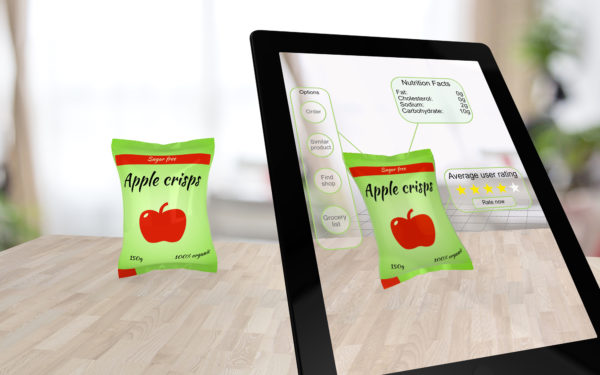Augmented reality–a technology that uses a trigger image to superimpose digital content over a user’s view of the real world–is growing in popularity and accessibility, and it holds a wealth of potential for education.
Often described as “QR codes on steroids,” the technology offers new and exciting ways for students to interact with lessons, said Jeff Peterson, an instructional technologist in the Lamar Consolidated ISD in Texas. Peterson presented a TCEA 2017 session on augmented reality’s application in classrooms.
Augmented reality-based apps infuse more engagement into learning exercises, and students often grasp complex concepts quickly with interactive content, said Peterson, referencing Drew Minock, an advocate for augmented reality in the classroom and outreach manager at augmented reality company Daqri.
“If you can captivate those kids when you introduce the lesson, you know they’re going to pay attention throughout the lesson,” Peterson said. “This is a great way to grab kids and get them involved.”
Relevant educational uses include using augmented reality during a visit to a museum or historical location, seeing science concepts in motion, looking at math from new visual perspectives, watching books come to life, and animating art.
(Next page: 12 augmented reality apps)
Peterson summarized a list of some of his favorite augmented reality apps. To see a full list of his resources organized by subject, visit his website.
1. Cyberchase 3D Builder: This geometry game is used for learning different geometric shapes.
2. The Brain AR App: Examines the layers of the head from skin, muscle and skull down to the inner areas of the brain.
3. Popar World Map: Explores famous landmarks, various animals, different cultures, and other world features
4. Horrible Hauntings: This companion app for the Horrible Hauntings book brings 10 famous ghosts to life (not suitable for younger students).
5. Amazing Space Journey: Students explore the solar system, sun, planets and satellites in detail. They also observe and learn about the planets’ position and orbit.
6. Anatomy 4D: This app provides an interactive 4D experience of human anatomy.
7. AR Flashcards: Letters are enhanced with animated objects beginning with those letters.
8. Shakespeare’s Globe 360: Students step inside the famous Globe Theatre and learn how it was constructed, what a visit there would have looked like years ago, and learn about theater life in that time.
9. Tour of the Nile: Students learn about the Nile River culture and can explore Egyptian archaeology and artifacts in 3D.
10. Quiver: Children create art, print it at school or at home, and watch it come to life.
11. Lunch Rush: Students use math and critical thinking skills to keep track of sushi in this game-based app.
12. Elements 4D: These augmented reality chemistry blocks come to life, and students can produce different chemical reactions by combining two elements.
- Friday 5: Virtual field trips - April 26, 2024
- Google, MIT RAISE launch no-cost AI training course for teachers - April 26, 2024
- 4 ways to support work-based learning - April 23, 2024

